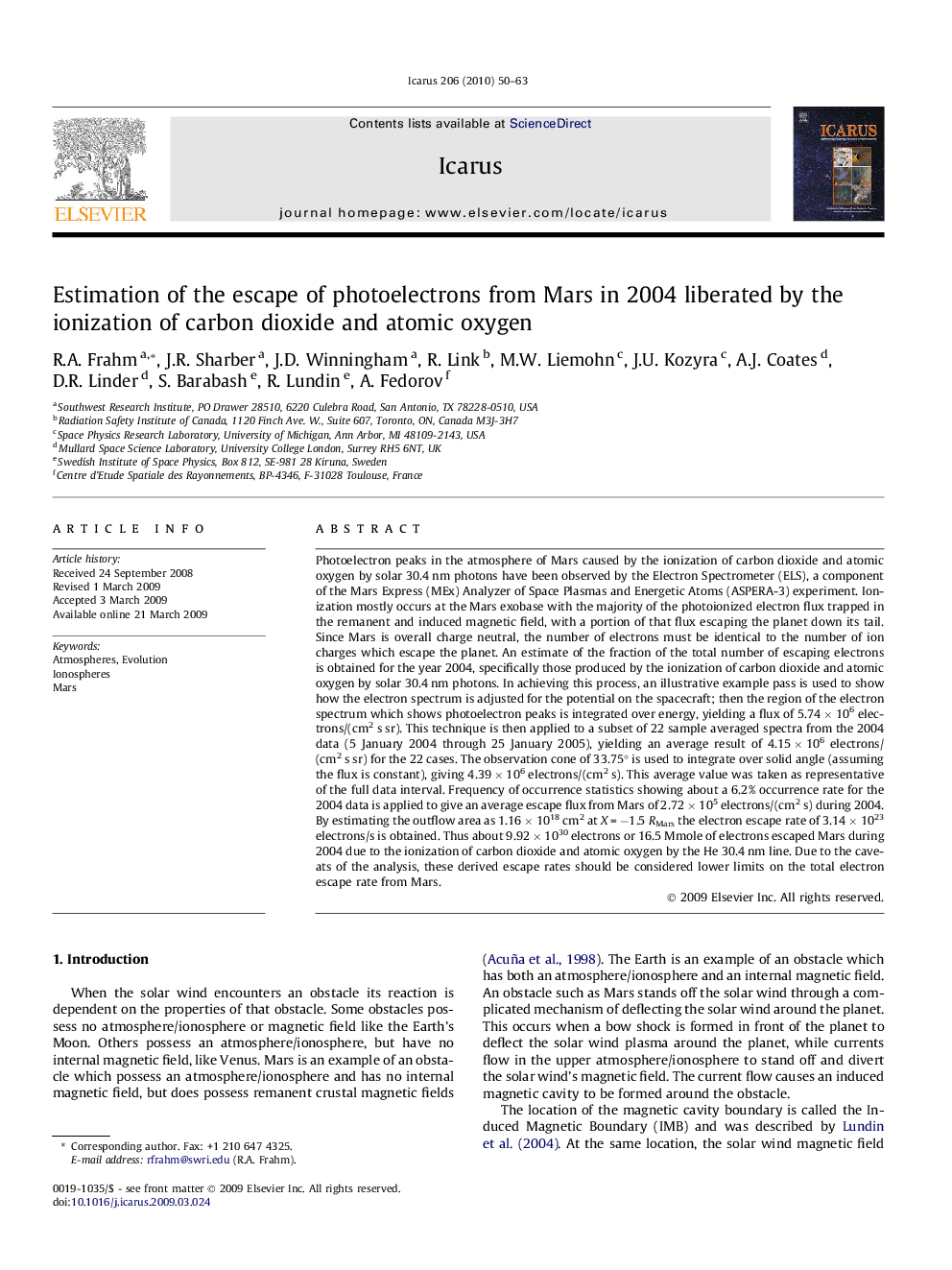| Article ID | Journal | Published Year | Pages | File Type |
|---|---|---|---|---|
| 1774708 | Icarus | 2010 | 14 Pages |
Abstract
Photoelectron peaks in the atmosphere of Mars caused by the ionization of carbon dioxide and atomic oxygen by solar 30.4 nm photons have been observed by the Electron Spectrometer (ELS), a component of the Mars Express (MEx) Analyzer of Space Plasmas and Energetic Atoms (ASPERA-3) experiment. Ionization mostly occurs at the Mars exobase with the majority of the photoionized electron flux trapped in the remanent and induced magnetic field, with a portion of that flux escaping the planet down its tail. Since Mars is overall charge neutral, the number of electrons must be identical to the number of ion charges which escape the planet. An estimate of the fraction of the total number of escaping electrons is obtained for the year 2004, specifically those produced by the ionization of carbon dioxide and atomic oxygen by solar 30.4 nm photons. In achieving this process, an illustrative example pass is used to show how the electron spectrum is adjusted for the potential on the spacecraft; then the region of the electron spectrum which shows photoelectron peaks is integrated over energy, yielding a flux of 5.74 Ã 106 electrons/(cm2 s sr). This technique is then applied to a subset of 22 sample averaged spectra from the 2004 data (5 January 2004 through 25 January 2005), yielding an average result of 4.15 Ã 106 electrons/(cm2 s sr) for the 22 cases. The observation cone of 33.75° is used to integrate over solid angle (assuming the flux is constant), giving 4.39 Ã 106 electrons/(cm2 s). This average value was taken as representative of the full data interval. Frequency of occurrence statistics showing about a 6.2% occurrence rate for the 2004 data is applied to give an average escape flux from Mars of 2.72 Ã 105 electrons/(cm2 s) during 2004. By estimating the outflow area as 1.16 Ã 1018 cm2 at X = â1.5 RMars the electron escape rate of 3.14 Ã 1023 electrons/s is obtained. Thus about 9.92 Ã 1030 electrons or 16.5 Mmole of electrons escaped Mars during 2004 due to the ionization of carbon dioxide and atomic oxygen by the He 30.4 nm line. Due to the caveats of the analysis, these derived escape rates should be considered lower limits on the total electron escape rate from Mars.
Related Topics
Physical Sciences and Engineering
Earth and Planetary Sciences
Space and Planetary Science
Authors
R.A. Frahm, J.R. Sharber, J.D. Winningham, R. Link, M.W. Liemohn, J.U. Kozyra, A.J. Coates, D.R. Linder, S. Barabash, R. Lundin, A. Fedorov,
